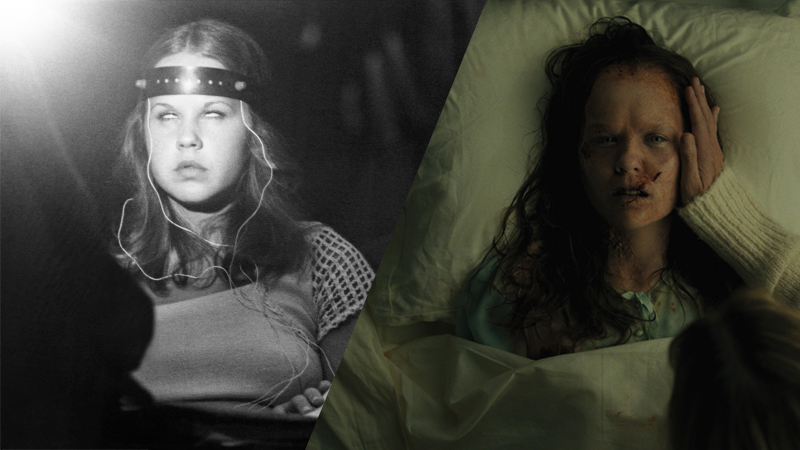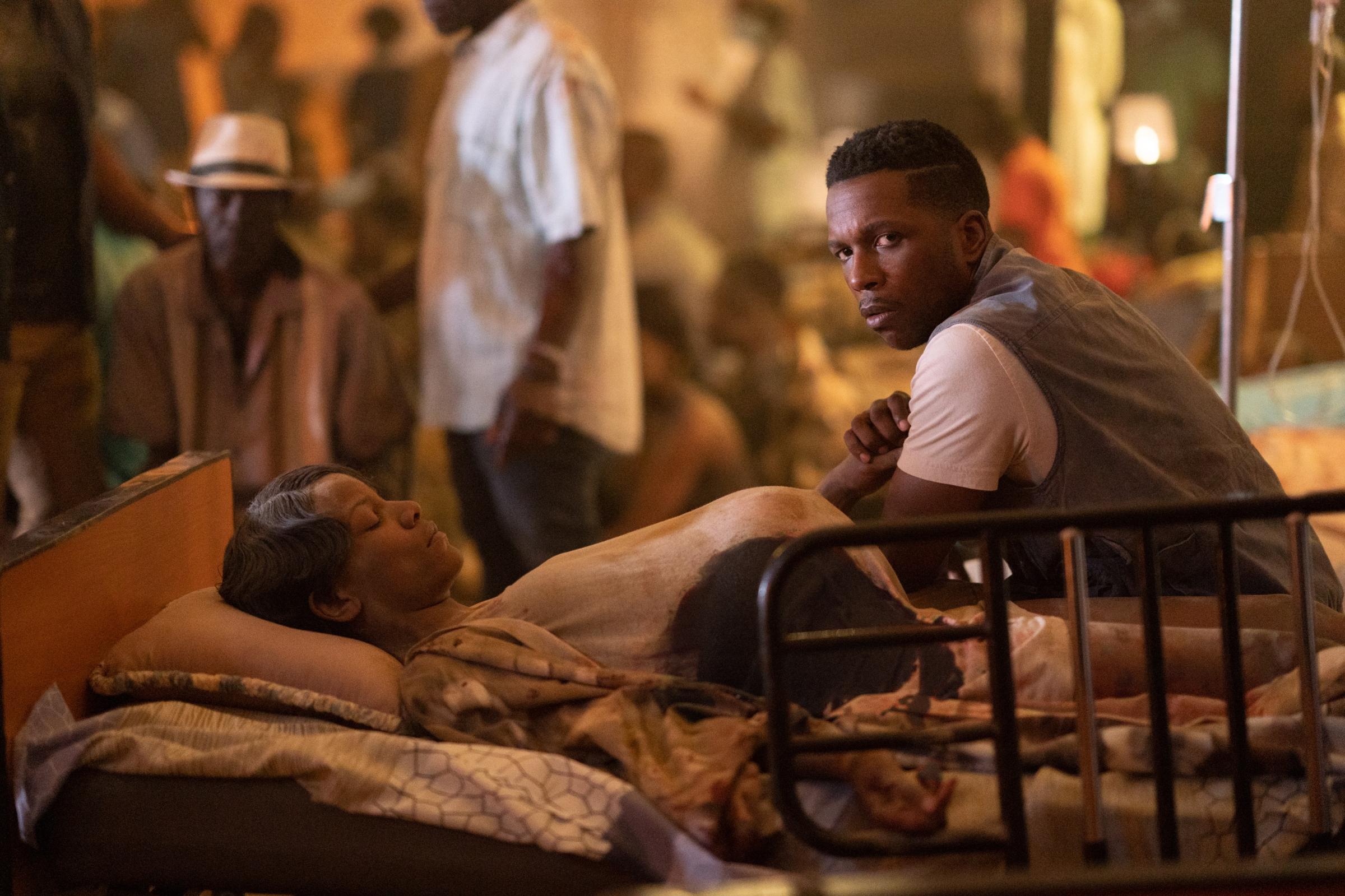
When William Friedkin died in August at age 87, the affectionate accolades and tributes started pouring in, as was only right. His career had spanned more than 60 years, but the Friedkin film that lurks in the memory of almost everyone who has seen it is The Exorcist, from 1973, a somber, jaggedly effective work hailed by many as one of the greatest horror films of all time. Friedkin made only one Exorcist film, but in adapting William Peter Blatty’s 1971 best-seller, he’d unwittingly created a renewable resource. The Exorcist has spawned numerous sequels and imitators over the years (one of them, The Exorcist III: Legion, directed by Blatty himself), and it extends its long reach into the present with The Exorcist: Believer, directed by David Gordon Green and starring Leslie Odom Jr. As a movie subject, demonic possession is evergreen. But the greatest, strangest Exorcist film may be neither the first nor the most recent; in fact, it’s the one almost everyone hates, though how anyone can resist the totally out-there vision of James Earl Jones in a locust headdress is beyond me.
Read more:The 14 Most Anticipated Horror Movies of Fall 2023
The 1977 Exorcist II: The Heretic, directed by John Boorman—with the input of his frequent collaborator Rospo Pallenberg—is generally hailed as a camp classic, a ludicrous follow-up to a masterpiece made by a genius. The consensus among many serious-minded people is that it’s just bad; they’ll happily quote its howler dialogue, and point to the ostensibly stiff performance of its star, Richard Burton, as evidence. After a screening of the wholly lackluster Exorcist: Believer, I blurted out to a group of my fellow critics that Exorcist II was my favorite Exorcist film. They told me outright I was crazy, that this could not even be possible. But at this point, I’ve watched Exorcist II so many times that its weird excesses, its sometimes cheap-looking and sometimes dazzling effects, seem perfectly normal to me. Unlike Friedkin’s movie, it’s hardly scary at all, which could be yet another reason horror fans dismiss it. But I find Boorman’s spirit of imagination and inventiveness affecting by itself. Exorcist II takes great leaps, some of which don’t work. Yet even its perceived failures force us to ask questions of ourselves: What do we really expect from a sequel? We want more of the same, only different. If we really love a movie, we may subconsciously want its follow-up to fail; that way, we can remain comfortable in our original judgment, instead of being jarred out of it. A sequel that’s a let-down is an opportunity to say those words that put an extra gloss of validity on our own good taste: Nothing can top the original.

There are, of course, sequels that are even greater than their predecessors—I’d submit The Godfather Part II as Exhibit A. But the issue most people seem to have with Exorcist II is that it’s barely a sequel at all, and even though it stars Linda Blair, who played Regan, the bedeviled preadolescent of the first film, they’re essentially right. In Exorcist II, Blair’s Regan is now a teenager living in New York with her caretaker, Sharon (Kitty Winn, also returning from the first film), while her mother, actress Chris MacNeil, is off filming on location. (Ellen Burstyn refused to come aboard Exorcist II, though she does have a pointless role in The Exorcist: Believer. More on that later.)

It has been four years since Fathers Merrin and Karras (Max von Sydow and Jason Miller) cast out the surly demon that had taken possession of little Regan’s body, instigating some rather impressive 360-degree head-spinning and much spewing of bilious green goo, though it cost them their lives. (Von Sydow appears in Exorcist II in a few flashback scenes.) Regan remembers nothing of the demon’s destructive residency, but there’s still some danger that she may be harboring damaging suppressed memories. Dr. Gene Tuskin (Louise Fletcher), a psychologist who specializes in high-toned hypnosis techniques, is trying to help her. Enter Burton’s Father Philip Lamont, a friend of the late Father Merrin’s who has recently attempted and failed at an exorcism of his own, resulting in a young woman’s death. To distract him from despair, a big-deal Cardinal—played by the aged Paul Henreid, who, some 35 years earlier, had wooed Bette Davis by lighting two cigarettes at once in the spectacular Now, Voyager—has assigned him to investigate the details of Father Merrin’s death. He approaches Dr. Tuskin in the hopes of learning about Regan’s experience, and he and the formerly possessed teen become both mentally and spiritually connected with the help of a humming, flashing-light doohickey called a Synchronizer.

That’s a lot to take in right there, though we haven’t even addressed major plot points like Father Lamont’s time-travel adventure on the back of a flying locust, the physical embodiment of the powerful demon Puzuzu, or the appearance of Jones in that fetching locust headgear. Why locusts at all, you might ask? Boorman is drawing on their fearsome Biblical connotations, but he’s also interested in ewky closeups showing how the collective beating of the swarm’s wings incite them into a violent frenzy, causing them to cannibalize one another. Good times.
Read more: 21 Underrated Horror Movies You Probably Haven't Seen and Can Stream Right Now
It all sounds so silly. And it is, in a way, but it’s also bracingly unapologetic. The plot of Exorcist II makes almost no sense—but when you’re dealing with spiritual mysteries, does it really pay to get too hung up on logic? Exorcist II is one of those hallucinatory fever-dream pictures that you can’t fully believe you just witnessed. (At least not unless you’ve seen it five or six times, as I have.) Part of the story takes place in an African city, resplendent with a natural stone church. Boorman and his crew created this setting, an Emerald City of hardened mud clay, in Warner Bros.’ Burbank studio—the sun, a hard, red-hot circle, hangs so ominously over this landscape that it feels both real and unreal, the phantasmic illusion of a tormented priest. And Dr. Tuskin’s office is a fantastic assemblage of glass panels that reflect and refract images that may be real, or maybe not. At one point we see the real Regan, under the spell of the Synchronizer, and a ghostly version of her past, demon-possessed self engaged in a literal struggle for Dr. Tuskin’s beating heart. It’s a nutty, virtuosic effect, the kind that only a symphonic director like Boorman—the guy behind the marvelous autobiographical reverie Hope and Glory, as well as the Arthurian wonder Excalibur, and the feat of gorgeous madness that is Zardoz—could pull off. And while you wouldn’t call Burton’s performance in Exorcist II one of his best, his eyes alone carry realms of weariness. He’s convincing even when he’s not really trying, maybe because he’s not really trying.
Is Exorcist II objectively greater than Friedkin’s film? Objectively, no. But then, there’s no such thing as objectivity when it comes to explaining why certain films beguile us and others merely earn our admiration. I was 12 when The Exorcist came out, a dutiful Catholic schoolgirl, and our teacher, Sister Joseph, forbade us from seeing it. The bishops—or someone—had decreed that even watching The Exorcist could cause us to become possessed. Yipes! Who needed that? Pimples were bad enough.

When I finally did see it, some 20 years later, I understood why it had why it had terrified audiences upon its release, and also why it had been so controversial. (Though in some ways, it’s the best advertisement for the Catholic Church you could possibly make. Hey, their arcane, rarely used ritual actually worked.) But Friedkin’s skill and elegance notwithstanding, I still love Exorcist II more. As for Green’s Exorcist: Believer, which starts out strong—evoking all the reasons demons in search of a body to possess can’t resist the hormonal lightning rod of adolescent girls—and ends in a dumb jumble of generic-looking zombie-girl Blumhouse special effects: I’ve already forgotten it. Odom is a terrific actor, and he makes a believably distraught dad. But poor Ellen Burstyn. Long after refusing to appear in Exorcist II, she agrees to show up in this thing—as the older version of Chris, now the ultimate coastal grandma, dressed in floaty, flattering white scarves and ropes of crystal beads—only to get about 10 minutes of screen time, during which her character suffers a needless and stupid indignity. Though it’s not something she could have known some 47 years ago, Burstyn said yes to the wrong Exorcist sequel. If only she’d chosen the one with poetry in its soul.
More Must-Reads from TIME
- Caitlin Clark Is TIME's 2024 Athlete of the Year
- Where Trump 2.0 Will Differ From 1.0
- Is Intermittent Fasting Good or Bad for You?
- The 100 Must-Read Books of 2024
- Column: If Optimism Feels Ridiculous Now, Try Hope
- The Future of Climate Action Is Trade Policy
- FX’s Say Nothing Is the Must-Watch Political Thriller of 2024
- Merle Bombardieri Is Helping People Make the Baby Decision
Contact us at letters@time.com